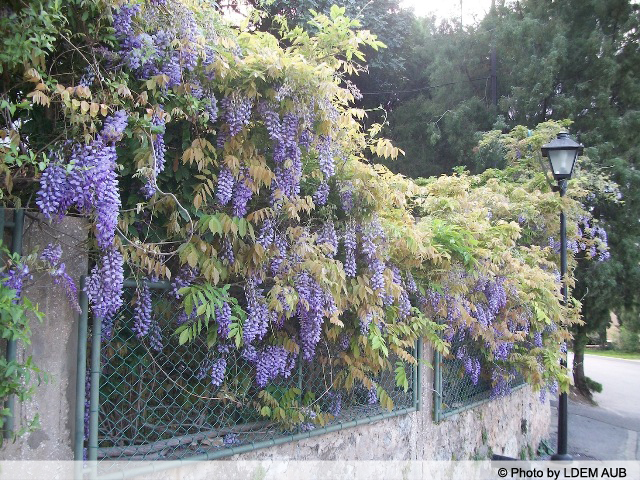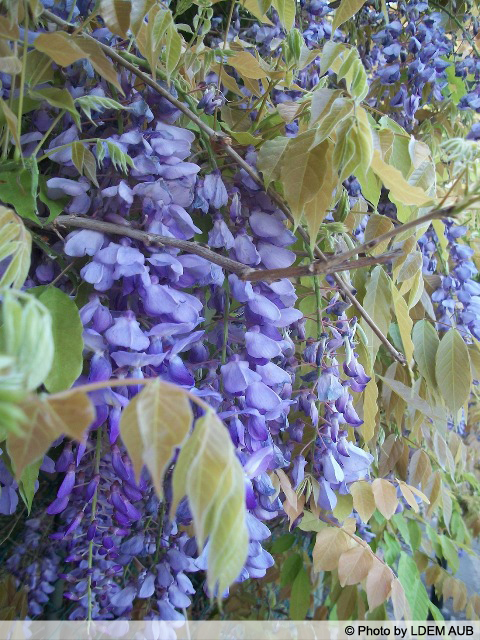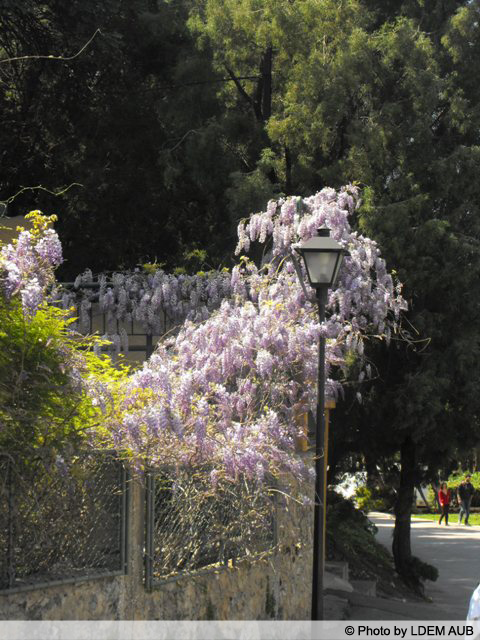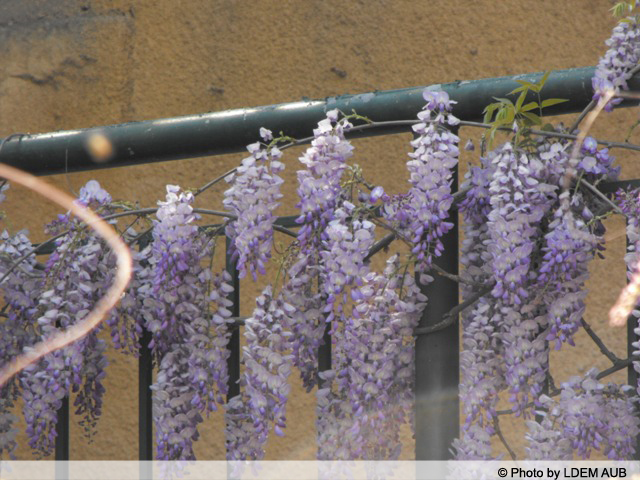Wisteria sinensis (Chinese Wisteria)
Chinese Wisteria is a shade-tolerant vine, but it blooms only when grown in the partial to full sun It prefers a deep, rich loam, but will grow in any soil. Wisteria has a fast growth rate and may be hard to transplant due to a coarse root system. Planting from containers is easy. The roots are aggressive and could disrupt a nearby garden. The violet-blue flowers, borne in showy, drooping racemes, are produced in late winter (hardiness zone 8 and 9) to early summer (hardiness zone 6). They cover the plant for several weeks each year.Bark is beautifully twisted with age, Usually do not transplant well All parts poisonous
- Landscape Information
- Botanical Description
- Horticulture Management
-
French Name: Glycine de Chine
Pronunciation: wiss-TEER-ee-uh sy-NEN-siss
-
Origin: China
-
Heat Zones: 1 to 8
Hardiness Zones: 5 to 9
-
Uses: Screen, Espalier, Container, Wildlife, Trellis
-
Size/Shape
Growth Rate: Moderate
Tree Shape: Weeping
Canopy Symmetry: Irregular
Canopy Density: Open
Canopy Texture: Medium
Height at Maturity: 8 to 15 m
Spread at Maturity: 3 to 5 meters
-
Foliage
Leaf Arrangement : Opposite
Leaf Venation: Pinnate
Leaf Persistance: Deciduous
Leaf Type: Odd Pinnately compund
Leaf Blade: 10 - 20
Leaf Margins: Entire
Leaf Texture: Smooth
Leaf Scent: No Fragance
Color(growing season): Green
Color(changing season): Yellow
-
Flower
Flower Size Range: Over 20
Flower Type: Spike
Flower Sexuality: Monoecious (Bisexual)
Flower Scent: Pleasant (Sweet)
Flower Color: Purple, Blue
Seasons: Spring, Summer
-
Trunk
Trunk Susceptibility to Breakage: Generally resists breakage
Number of Trunks: Multi-Trunked
Trunk esthetic Values: Smooth
-
Fruit
Fruit Type: Legume
Fruit Showiness: Yes
Fruit Size Range: 10 - 20
Fruit Color: Brown
Seasons: Summer, Fall
-
Tolerance
Frost Tolerant: Yes
Salt Tolerance: Poor
-
Requirements
Soil Requirements: Clay, Loam, Sand
Soil Ph Requirements: Acidic, Neutral, Alkaline
Water Requirements: High
Light Requirements: Full
-
Management
Toxicity: Yes
Susceptibility to Pests and Diseases: Yes
Pruning Requirements: Little needed, to develop a strong structure
Fruit/ Leaves/ Flowers litter: No
Surface Rooting: Yes
Life Span: 25-50 years
Edible Parts: None
Pests: Aphids
Plant Propagation: Seed, Cutting






